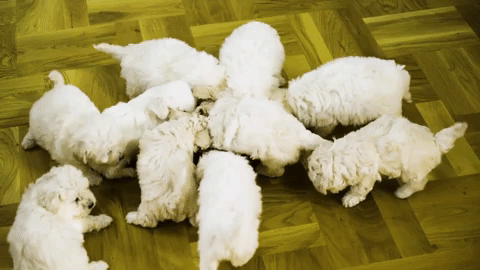
If you place a bowl of dog food in front of a pack of puppies, you’ll see a scurry of snouts scrambling for a bite. As all the slots of space around the bowl fill up, only so many puppies can eat at once. But, what happens when you have hundreds or thousands of puppies vying for a single bowl of food?
That’s the situation mechanical engineering professor, David Hu has on his hands when he plops an orange slice into a bin of full of little, wriggling creatures. To test the “Puppy Bowl Problem” on a larger scale, Hu turns to something a lot less furry (and a lot less cute) than puppies: maggots.
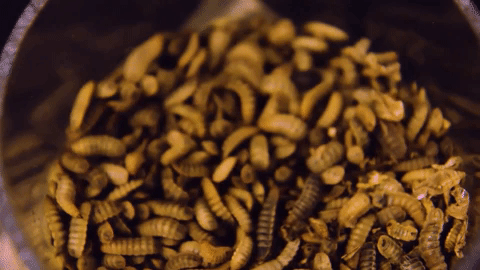
“They’re really just hungry little babies,” Hu says. He and a graduate student at Georgia Institute of Technology are constructing mathematical models of the maggots’ motion to see how so many of these hungry crawlers can eat so efficiently while looking at the variables that influence their speedy food consumption.
While these maggots may be small, they have a big appetite: the black soldier fly larvae that Hu studies can gobble up to twice their body mass in food per day. But when you take a closer look at these champion eaters, their fast food consumption is not all based on an insatiable appetite. In fact, there is a limit to how much a maggot can eat at a given time. You might think that they are eating at a constant rate, but Hu and his team watched individual larvae and saw that one only eats for small fractions of an hour.
[Watch and listen to unconventional bird calls.]
“A larva around the piece of food is just blocking the other larvae,” Hu says. “Ordinarily, they would take up a spot and slow down the other larva, therefore slowing down the rate of consumption.”
Yet, when the researchers placed a piece of orange in containers with different numbers of maggots, the container with the most maggots ate the orange roughly 10 times faster, which was much higher than expected, Hu explains. So how do the maggots wiggle their way around the “Puppy Bowl Problem”?
To find the answer, Hu peers at their fluid, collective movement through a physics lens: “If you want to measure the pressure in a room, you don’t track every single molecule in the room. What you do is come up with rules for how groups of these molecules would behave under certain conditions.”
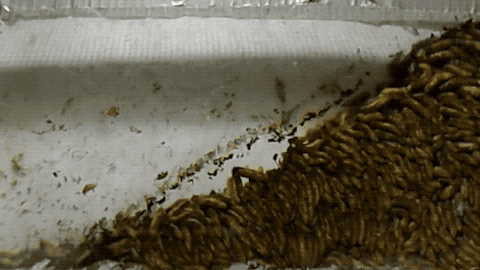
The larvae move like the ocean, Hu describes. They methodically slosh back and forth in a container, like the rocking lull of waves. But when food is introduced, suddenly the calm sea of larvae turns into a storm of tiny vortexes, or whirlpools. Individuals nudge against blockades for a nibble—the movement signalling to nearby neighbors that there’s food, causing a series of pushing and writhing.
The dinner party is a lot like “a buffet line,” Hu explains. As they push others out of the way so each can grab a bite, “you can imagine the buffet line would be eaten much faster.”
[Welcome to the Hotel Nematoda.]
The maggots’ sloshing and whirlpooling action generates a force that the research team can measure in a vice-like contraption. Food added to a tub creates more activity and more force created by the maggots—and as they eat it up, the pressure dissipates.
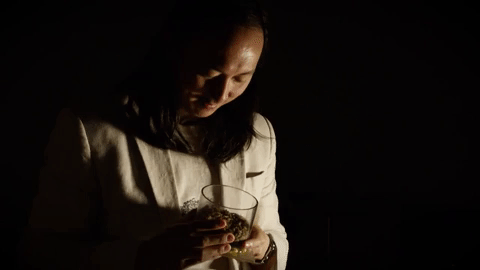
But Hu’s lab is not a creepy, crawling maggot madhouse without purpose. These efficient, feasting creatures can be harnessed for our own benefit: breaking down waste.
A third of the food in restaurants and homes is thrown in the trash, which can sometimes end up as pollution. Maggots raised in bulk at fly larva farms dine on restaurant, consumer, and home food waste—and can eat 100 tons in a day. These maggots are then fed to chickens and fish for a high protein diet. Plus, maggots aren’t picky eaters. They’ll consume everything from veggies, roadkill, to humans (when we’re dead, of course).
“After we die, this is what’s going to happen to us,” Hu says. But, he adds, “They could provide a lot of use before we’re gone. It’s the one thing that doesn’t have any human diseases and that will get rid of all our food waste.”
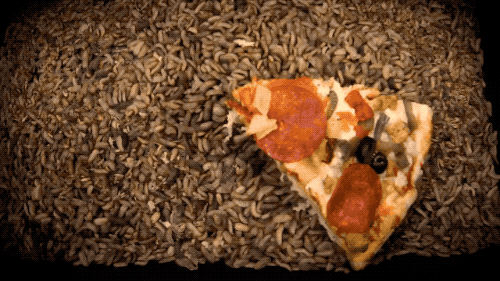
Credits
Produced by Luke Groskin
Filmed by Brandon Swanson
Article by Lauren J. Young
Music by Audio Network
Additional Footage ands Stills Provided by David Hu, Olga Shishkov,
Grubbly Farms, Pond5, and Levi Anderson (CC BY 2.0)
Meet the Producers and Host
About Luke Groskin
@lgroskinLuke Groskin is Science Friday’s video producer. He’s on a mission to make you love spiders and other odd creatures.
About Lauren J. Young
@laurenjyoung617Lauren J. Young was Science Friday’s digital producer. When she’s not shelving books as a library assistant, she’s adding to her impressive Pez dispenser collection.